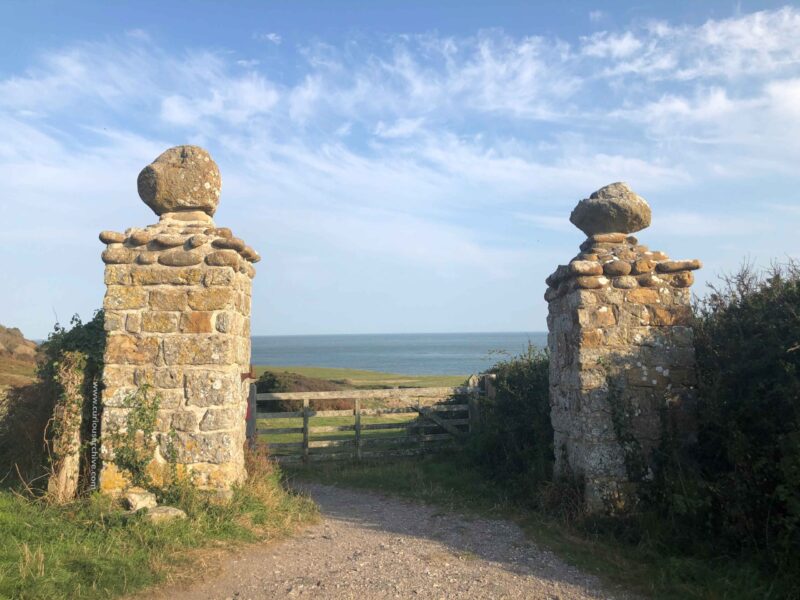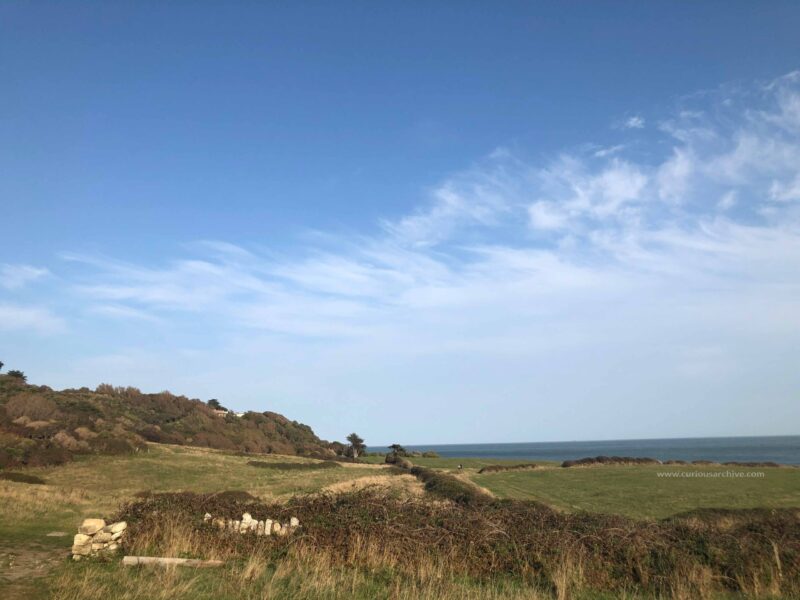Phantom Animals and Lighthouse Keepers at St. Catherine’s Lighthouse, Isle of Wight
St. Catherine’s Lighthouse, located at the southernmost point of the Isle of Wight has been guiding ships through the turbulent sea for over 180 years. Unlike the northside of the island with it’s views of mainland England, the lighthouse at Niton Undercliff looks out into the deep, empty expanse of the English Channel. Despite it’s scenic and peaceful location, the lighthouse has seen it’s fair share of tragedy throughout the years, inspiring numerous reports of paranormal activity.
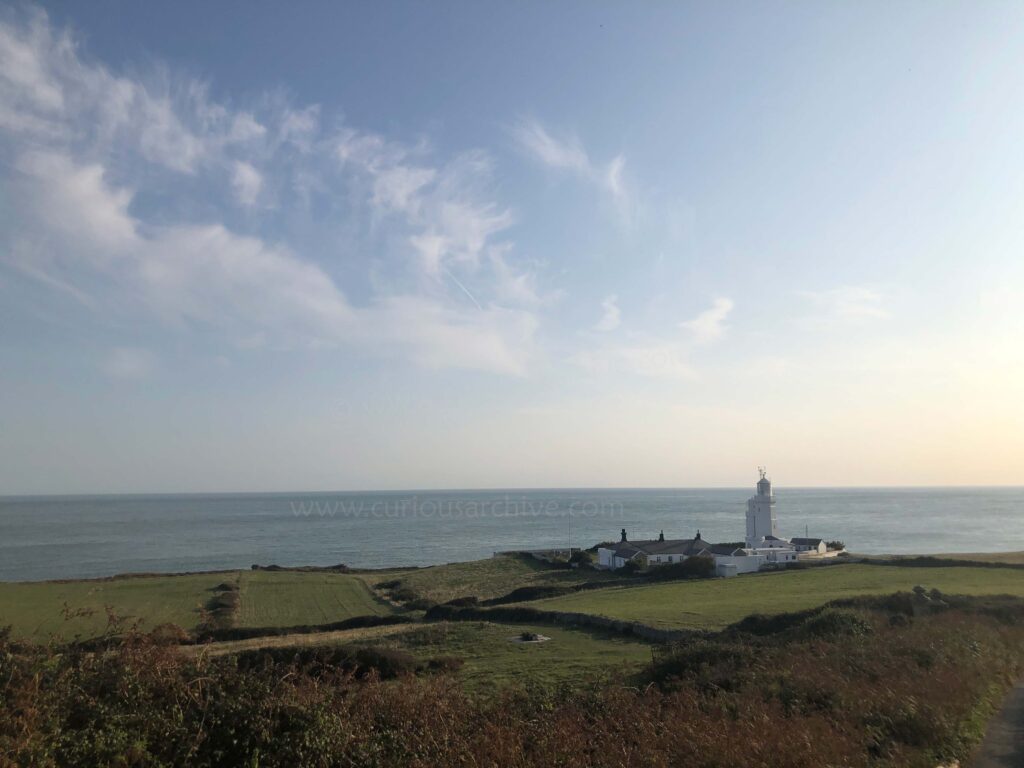
© Curious Archive, 2020.
A Medieval Chapel and German Air Raid
In 1323, Walter de Godyton set up the first lighthouse at St. Catherine’s Point. Unlike today’s electric lights, this medieval lighthouse was powered by a small fire used to warn ships of the island’s treacherous coast. Along with the lighthouse, Walter built a small family chapel for mass and prayers of safe passage. This humble structure helped guide sailors through the rough seas until it was completely destroyed during the Reformation in the 1530s.
Two hundred years later in 1838 Trinity House, who maintains over 60 lighthouses in the United Kingdom and Crown Dependencies, built the present day lighthouse at St Catherine’s Point. The construction followed the sinking of Clarendon, a Caribbean ship carrying a cargo of rum, coconuts, and turtles that crashed during a storm into the rocks at nearby Blackgang Chine, tragically killing 28 sailors. Seeing the dire need for a lighthouse at the location, St. Catherine’s Lighthouse was open for operation in 1840. (It’s said that the sudden brightness of the lighthouse’s lamp was so shocking to the cattle on the Downs that they stampeded away in fear!)
One hundred years later, tragedy struck once again. On 1 June 1943 during the Second World War, St. Catherine’s’ Lighthouse keepers R.T. Grenfell, C. Tompkins, and W.E. Jones were killed during a German air raid that destroyed the lighthouses’ engine room. Despite the devastating loss of life, the rest of the lighthouse was unharmed. The three men were buried in a communal grave at nearby Niton’s St John Churchyard, under a headstone baring Matthew 5:16 “let your light so shine before men that they may see your good works.” A memorial plaque honouring their service was added to the first floor of the lighthouse.
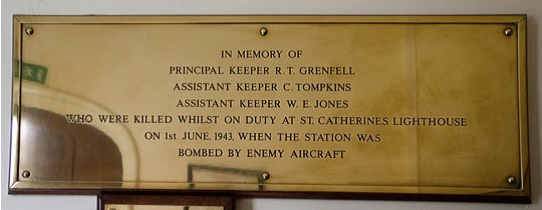
Following the air raid, St. Catherine’s Lighthouse continued to employ lighthouse keepers until the 30 July 1997 when the lighthouse became fully automated.
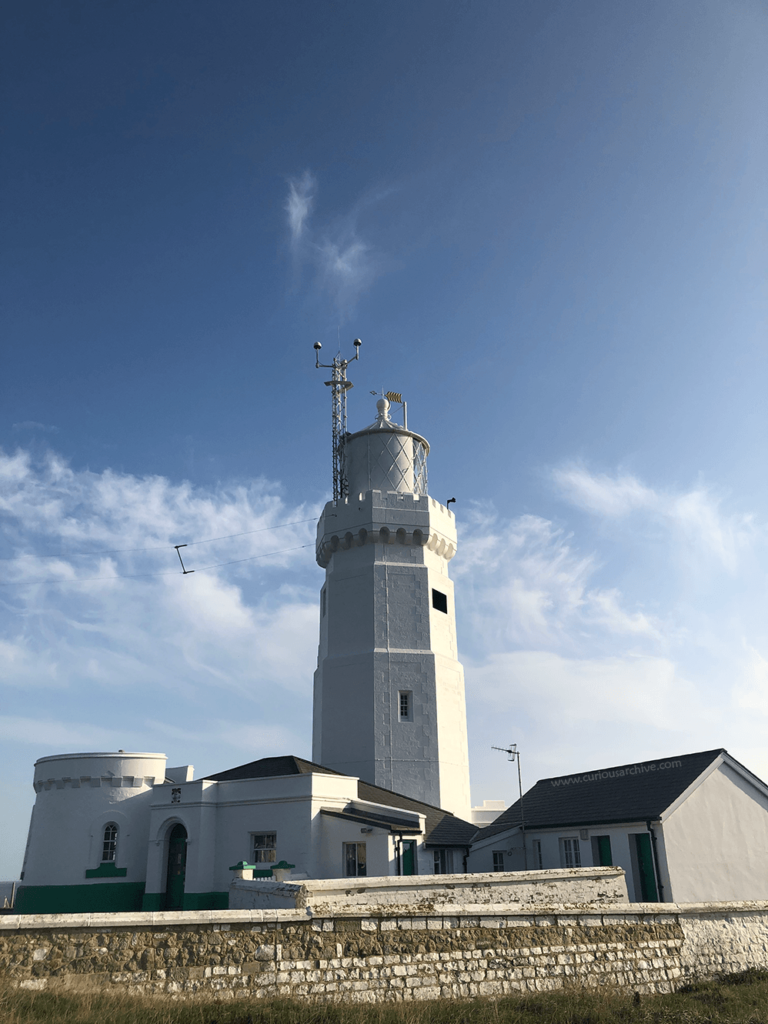
Reported Hauntings
As with any site of historical tragedy, St. Catherine’s Lighthouse has it’s fair share of ghost sighting. Visitors have reported seeing the spirits of the lighthouse keepers killed during the air raid walking the grounds, carrying out their duties as if the attack never occurred. Others have reported objects inside the lighthouse moving on their own accord and sometimes disappearing entirely. Curiously, there are also numerous reports of ghost animals on the premises, though it’s unknown why this might be the case. Perhaps the ghost of a former lighthouse keeper’s beloved dog?
It’s no surprise that visitors to St. Catherine’s Lighthouse keep an eye out for paranormal activity. The area surrounding the lighthouse, while beautiful, feels remote and otherworldly. And since the lighthouse was involved in relatively recent tragedy, it’s hard to visit without thinking of the lighthouse keepers that met their tragic end, as well as all the lives lost at sea. Today, the lighthouse is featured on guided ghost walks, particularly during the Halloween season, and is one of the island’s many reportedly haunted locations.
Visiting St. Catherine’s Lighthouse
Wear your walking shoes if you’re planning on visiting St. Catherine’s Lighthouse as it’s a small downhill (and back uphill!) trek from the nearby private road. Unfortunately, there’s no onsite parking available for visitors. However, there is a beautiful field with happy cows and breath taking views on the journey down to make the twenty-minute walk worthwhile. If you’re looking to spend more time in the area, three cottages next to the lighthouse have been recently renovated and are available for overnight stays. And the surrounding National Trust property is filled with lovely waterside walks, perfect for taking in the island’s natural beauty and watching the ships out at sea.
Sources and Additional Reading
Trinity House: St. Catharine’s Lighthouse
National Trust: History of the lighthouse at St Catherine’s Point
Spooky Isles: Isle of Wight’s 13 Haunted Places to Visit
The Travel: There’s Something Strange About the Isle Of Wight, Where Things Literally Go ‘Bump’ In The Night

